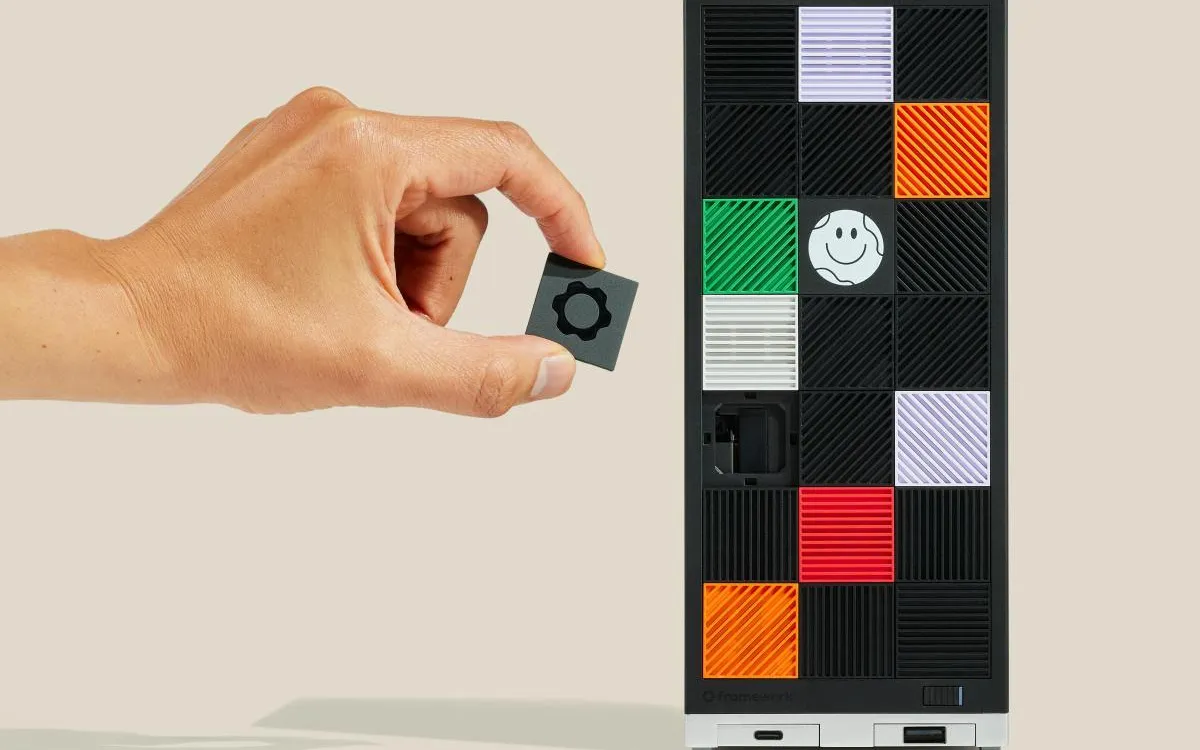
Framework, widely recognized for its innovative modular and repairable laptops, has entered the desktop market with the release of its first desktop computer. This compact yet powerful PC is designed to cater to both gaming enthusiasts and users interested in running large language models on their personal machines. The standout feature of this new device is its cutting-edge internal architecture.
The new Framework Desktop is among the first to incorporate AMD’s Strix Halo architecture, also known as the Ryzen AI Max processors. These all-in-one processing units are designed to deliver superior performance. With this design, Framework targets two specific customer bases: those seeking a compact yet formidable gaming PC and those wanting to manage extensive language models locally.
Externally, the Framework Desktop may appear more like a toy than a conventional computer. Its compact design is built around a mini-ITX mainboard, making it smaller than both the PlayStation 5 and Xbox Series X. One of the device's unique features is its customizable front panel, which consists of 21 interchangeable plastic square tiles. When purchasing a Framework Desktop from the company’s website, users can select their preferred tile colors and patterns to personalize the front panel.
In addition to standard ports, the Framework Desktop features the brand’s iconic expansion cards at both the front and back of the device. Users can choose from a variety of modules, including USB-C, USB-A ports, a headphone jack, an SD card reader, or even a storage expansion card, providing ample connectivity options.
The internal setup of the Framework Desktop is straightforward yet powerful. It includes a mainboard equipped with AMD’s accelerated processing unit, a fan, a heat sink, a power supply, and two M.2 2280 NVMe SSD slots for storage. The AMD Strix Halo APU is directly soldered to the mainboard. Framework offers two configurations: the AMD Ryzen AI Max 385 and the AMD Ryzen AI Max+ 395. The premium configuration features 16 CPU cores, 40 graphics cores, and 80MB of cache, while the base model includes 8 CPU cores, 32 graphics cores, and 40MB of cache.
The most debated design decision is the soldered-in RAM, which ranges from 32GB to 128GB. Framework CEO Nirav Patel explained that to achieve the massive 256GB/s memory bandwidth that Ryzen AI Max offers, LPDDR5x memory had to be soldered. Although the lack of upgradable RAM might concern some, the potential to leverage up to 128GB of unified memory enables significant advancements in handling large language models.
With the Framework Desktop, users can run models like Llama 3.3 70B effortlessly using platforms like Ollama and llama.cpp, as well as other open-source tools for local AI workloads. Models from Mistral, Nous, Hermes, and DeepSeek are also expected to function smoothly.
Framework also offers the mainboard separately, allowing for versatile applications such as a mini-rack setup with multiple Framework Desktop mainboards running concurrently for AI testing purposes. The base model of the Framework Desktop is priced at $1,099, while the high-end variant is available for $1,999. As with other Framework products, this desktop supports both Windows and popular Linux distributions like Ubuntu, Fedora, and its gaming-centric cousin Bazzite. Pre-orders are available now, with shipments scheduled to begin in early Q3 2025.